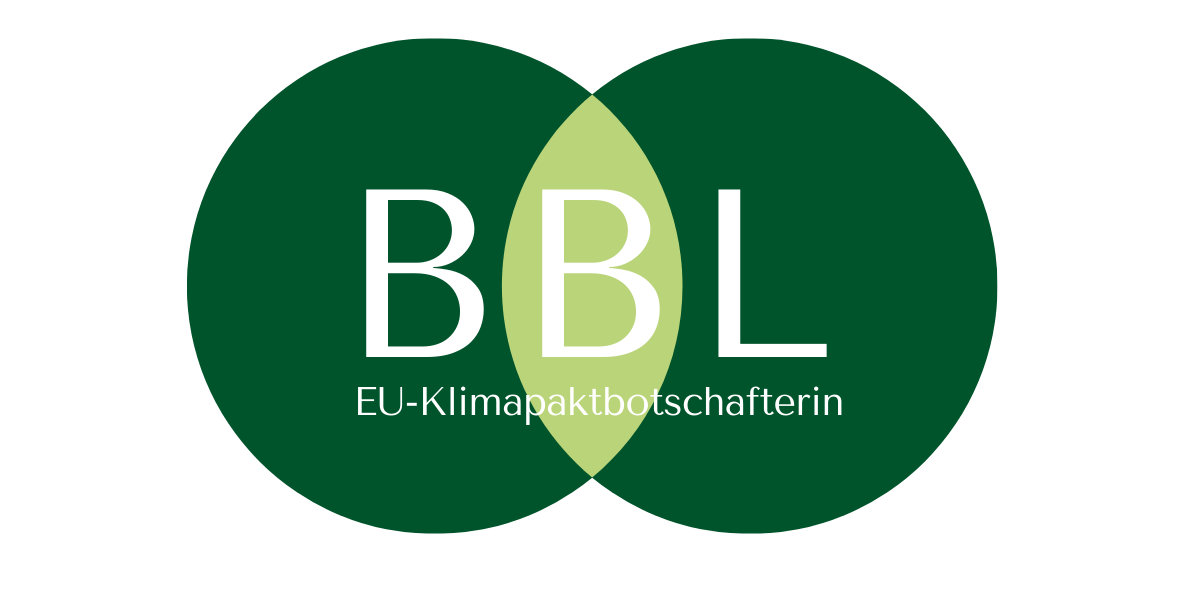sensible solutions
At first glance, simply burning green waste may seem easy. However, if you consider the massive health and climate damage, it becomes clear that this supposedly easy way is a dangerous dead end. The good news: there are alternatives.
Photo: Dilok Adobe Stock
Without alternative?
No! On the contrary!
Plant residues and waste from the food industry are valuable materials that can be used ecologically and economically. The recycling and use possibilities are diverse. Some of them have been tried and tested for decades, some are still being researched, also in order to become independent of oil.
With all alternatives, it is important that there is no competition with food or feed production. That was the serious problem of the first-generation plants, in which so-called energy crops such as corn, wheat or sugar beets were used.
Second-generation plants work with organic waste, especially from agricultural production or the food processing industry.
Most “waste” is produced by citrus fruits that are considered unfit for consumption. In 2020, 3.2 million tons of oranges were produced in Spain . Almost a fifth of all production is discarded due to shell defects, lack of size, or pest infestation.
Fallen fruit is burned in the fields without benefit, but to the detriment of people, the climate and the environment.
The following recycling alternatives show that there is another way.

biogas
Photo: Dilok Adobe Stock

Bioliq (bioslurry gasification)
Photo: Grigory Bruev-AdobeStock

bioethanol
Photo: Chokniti-AdobeStock

Organic plastic made from orange peel
Photo: Rolling Stones-AdobeStock

biodiesel
Photo: SerPhoto-AdobeStock

Agricultural exploitation
Photo: moodboard-AdobeStock
What do these alternatives look like in practice?
biogas
When organic waste ferments in the absence of air (anaerobic), it is broken down with the help of microorganisms in a closed container (fermenter). Biogas is produced during this process. It mainly consists of carbon dioxide (CO 2 ) and methane (CH 4 ).
Before the waste ferments in the fermenter, it is crushed and homogenized. In addition, previously foreign and disruptive substances such. B. Sorted out plastic bags and glass.
Biogas can be fed into the natural gas network or used in a combined heat and power plant to generate electricity and heat (combined heat and power). Cold can also be produced by connecting an absorption cooling system (combined heat, power and cold).
Research on the utilization of orange peel in particular:
bioethanol
Woody plant residues and fruit residues can be used separately or together for the production of bio-ethanol. In many countries around the world, research is being carried out into the production of ethanol from biomass , also in order to become independent of petroleum.
Examples:
Grape marc: In France, a bus runs on the Sprit ED95 , which consists of 95 percent bioethanol produced by Raisinor France Alcools from the grape marc of Bordeaux wine. The fuel ensures 85 percent fewer CO2 emissions, 50 percent fewer nitrogen oxides and 70 percent fewer particles (fine dust). 1,000 vehicles could be supplied with the ethanol from grape pomace from the Bordeaux growing region.
Apple pomace: The production of apple juice in Germany produces around 3000,000 tons of apple pomace, which has so far been used primarily as animal feed in pig fattening. But apple pomace can also be used to produce bioethanol. Using an alternative enzyme complex, researchers at the Bergakademie Freiburg have developed a process for splitting the long-chain sugar molecules into simple sugars, fermenting them with yeast and distilling the aqueous solution into ethanol.
From avocado skins and seeds: In Mexico, with the participation of universities from Chile, Brazil, Portugal, Spain and England and with the support of a grant from the European Union, research is being carried out into the skins and seeds of Avocados , which make up about 45% of the total harvest of almost two million tons of fruit in Mexico alone, to be used as biofuels.
From cheese waste: Sachsenmilch , part of the Müller group of companies, has built a plant in Leppersdorf that is unique in the world to produce biofuel from cheese -making waste. The plant should be able to produce ten million liters of bioethanol.
biodiesel
Grape pomace can also be used to make bio-diesel.
New biocombustible partir de residuos de la production de vino (agenciasinc.es)
El Vino y el Futuro Combustible Alternative | OBS Business School
Organic plastic made from orange peel
PLimC. What sounds cryptic is a green all-rounder. Because PLimC describes a bio-based plastic that is obtained from orange peels .
The natural substance limonene is extracted from these, which in turn is oxidized and then combined with carbon dioxide. This can then be used to produce inexpensive, environmentally friendly materials for various industrial applications.
PLimC is a polycarbonate resulting from the synthesis of limonene oxide with carbon dioxide. In contrast to conventional polycarbonates, PLimC does not contain the harmful substance bisphenol A.
Antibacterial and biodegradable
In addition, the bio-based plastic has a number of properties that make it extremely interesting for industrial applications: it is hard, extremely heat-resistant, transparent and is therefore particularly suitable as a material for coatings such as antimicrobial polymers that are able to prevent E .Coli bacteria to prevent.
If these are used for containers in medical care and nursing, they can significantly reduce the risk of infection, not least in hospitals. But they are just as interesting as a basis for plastic implants, which should not pose any risk of inflammation.
Another application example are water-soluble polymers. If these were used for bottles, bags and containers, the pollution of the oceans could be actively prevented because they break down into ecologically harmless components.
ecological cycle
In Italy, the Italian design studio Carlo Ratti Associati (CRA) has founded a juice bar that has turned this eco-friendly principle into a business model. Because as healthy and refreshing as freshly squeezed juice is, it also produces a lot of waste, namely orange peel and disposable plastic cups in which the juice is often served.
In “Feel the Peel” you solve the problem directly. Via a spiral on the roof, over 1,000 oranges are processed into juice and sold on site one by one. The squeezed peels are then placed in a container and left to dry. The new bio-based plastic is produced from the dried and grated peel together with polylactide (PLA), from which plastic cups are printed using a 3D printer, in which the orange juice is then sold. (Photo: Markus-Mainka-AdobeStock)
Latest research: Bioliq (bioslurry gasification)
In 2006, the Karlsruhe Research Center in the Helmholz Society won the international “BlueSky Award” from the UN organization UNIDO on the subject of “New Technologies for the Use of Regenerative Energy Sources” for its “bioliq” (biomass to liquid) process for producing fuel from biomass.
It is a two-stage fuel production from biological residues such as straw or wood. The biomass is not gasified directly, but first processed by pyrolysis into a bioslurry , a kind of paste that has a higher energy density and can be transported more easily.
In the second stage, the bioslurry is then converted into synthesis gas in an entrained flow gasifier and later processed into fuel. 150 liters of fuel can be obtained from one ton of bioslurry. The plant is with 1st and 2nd stage in operation since 2008 and was funded by the Federal Ministry of Food, Agriculture and Consumer Protection (BMLV).
The special thing is the decentralized-central approach. Decentralized pyrolysis – centralized gasification and synthesis fuel production. This solves the logistics problem of the voluminous but low-energy biomass. The wine cooperatives have already declared their interest. In Baden-Württemberg alone, there are 200,000 to 250,000 tons of pruning every year.
Here is the research report.
Agricultural direct sales: crowd farming
Order at the place of origin, enjoy at the destination: That is the motto of CrowdFarming , a platform against food waste. It was founded by young farmers with the aim of preventing food waste and giving farmers planning and price certainty, independent of the intermediate trade.
Alternative cultivation methods that do not use weed killers or burns are part of the young farmers’ self-image.
Agricultural utilization: Goat feed instead of smoke
In cooperation with the University of Valencia, the EU-funded project lifelowcarbonfeed is currently running, in which shrub cuttings are used as goat feed.
Bio-ethanol from oranges: So-called Zumosoil still has a chance of success
In the 1990s, Florida -based researcher Karel Grohmann researched that oranges and their peels can also be used to produce bioethanol . Orange peels contain sugar and starch. With the addition of yeast fungi, alcoholic fermentation begins and splits sugar molecules into ethanol and carbon dioxide, which is climate-neutral because it is bound again by regrowing plants and fruits.
Al Gore encouraged Spaniards
“Zumosoil” ( soft gasoline ) was the term by which Al Gore, former US Vice President, entrepreneur and environmentalist, encouraged Valencians to produce a fuel of the future. At least that’s what Esteban González Pons called it, then Environment Minister of the regional government of Valencia and current member of the European Parliament. Around 37.5 million liters of environmentally friendly fuel should be produced from four million tons of citrus fruits with a yield of 75 to 80 liters per ton. This should supply 550,000 cars and thus 25% of the Valencian automobile park. 2,500 direct and another 20,000 indirect jobs should be created.
Like Sweden, Valencia wanted to become independent of oil. The Citrotecno company, supported by Valencian partners, invested 20 million euros in the project carried out by the Polytechnic University of Valencia, which had even spawned a European life-environmental project. The plant in Silla was inaugurated at the end of 2009.
Too high
However, the work was oversized. The minimum amount of cellulose waste from the juice industry could not be purchased because the juice industry was able to sell the waste at better prices as animal feed. Increasing gas costs reduced profitability.
There were also delays in government subsidies as a result of the financial crisis. When the main creditor withdrew – the bank had also assumed a guarantee for a loan from the state credit institution (ICO) due to the pioneering nature of the project – operations were discontinued in 2013 and the company dissolved in 2019.
Why Zumosoil 2.0 made from oranges can be a success
Research continues and costs are reduced
- In 2010, the researcher Henry Daniell ( University of Central Florida ), also from Florida, published a method that uses a tobacco enzyme instead of artificial enzymes that is obtained by cloning genes from fungi and bacteria and is significantly cheaper.
- Researchers from the Instituto Politécnico National-CEPROBI in Mexico published a study on four generations of raw materials for ethanol production in November 2018. The researchers describe the state of technical development, opportunities and necessary additional research content in order to achieve second-level bioethanol production 3rd and 4th generation to advance.
- Researchers from the Faculty of Chemistry at the University of Barcelona published in October 2021 a study on a new process for bioethanol dehydration and blending by heterogeneous azeotropic distillation that reduces energy consumption by 50%, improves environmental sustainability by 80% and payback time by 1, shortened by 5 years.
Photo Orange: supachai-AdobeStock
Conclusion
Burning plant residues from agriculture openly in the field is the simplest but worst solution. Plant residues are valuable materials from which the green energy of the future can be obtained. They are far too valuable to be burned to no avail and to the detriment of people, animals, the environment and the climate. They are worth harvesting and utilizing. There are so many ways to create something meaningful out of waste, especially biological waste.
Let's solve the problems together!
Would you like to know more about this topic? Know what you can do personally? You can contribute something to this topic? offer solutions? Write me, I look forward to your message!

